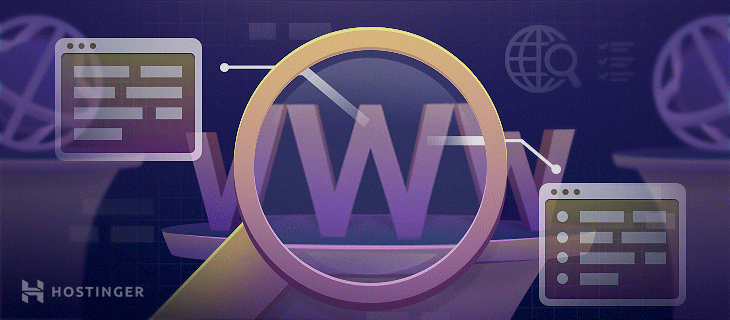5 Things You Should Know Before Creating a Website

All businesses and professionals that want to succeed in today’s online-driven world need to have a well-designed website. It’s a crucial part of effective branding and business growth, without which your professional reach and exposure would be very limited.
However, before you start creating your site, there are some basics you need to consider. Doing so in advance will smoothen the creative process later on, and make sure you end up with a site that serves its intended purpose.
Set aside some time for each one of the five points below. Conduct thorough research and decide on your end goals. Create a clear plan of action, and when the time comes to actually build your website, you’ll know exactly what you need to do.
1. The Goal of Your Website
What is the main reason for building your website? Is it to showcase your portfolio? To share your thoughts? Or to sell products and services?
Although there are lots of different website types online, they can mainly be split into five categories:
- A business website. The goal is to provide information about what your company does, show off your branding, and explain why customers should choose you over your competitors. Usually includes a company description, services or products, and contact information.
- eCommerce website. The goal is to sell products or services online. This type of website usually includes branding, an online store with payment gateways, and contact details.
- Portfolio website. The goal is to showcase your skills and experience as a professional. Usually includes examples of past work projects, your education, and anything else that improves your chances of getting hired.
- A blog/personal website. The goal is to share your thoughts, ideas, and other information with the world. Usually includes an introduction of the author, a blog section, and contact information.
- eLearning website. The goal is to provide courses and other educational materials about one or more subjects. Includes a subscription-type service, interactive courses, and contact information.
Decide what the goal of your website will be, and use that as your guideline when taking the next steps.
2. Your Competition
Now that you know the goal of your site, it’s time to look at existing businesses in the same industry. Analyze what kind of web design they use and what kind of branding they’re going for. Check how they approach their customers and what kind of marketing campaigns they focus on.
Study your competitors, especially the most successful ones. Doing so will help you understand what kind of approach will work best for your business too. It’ll also inspire you and give you ideas on how you can improve whatever they are doing.
Also, check what target market they aim at. See how this market rates your competitors and find out what product or service improvements would convince them to start purchasing from you instead.
3. Your Target Audience
Now that you’ve started looking into the potential market that would be interested in what you have to offer, it’s time to slim that down into your exact target audience. Doing so will help you with effective branding, marketing campaigns, and choosing the best web design.
Look at the demographics of people who tend to be interested in what you offer. Pay attention to their age, location, personality traits, and anything else that might help you narrow down your target audience.
A great method to try is creating a customer persona – a fictional person that describes your target audience perfectly. Use this customer persona as your focal point when you’re building your website, as it’ll help you stay on track and ensure that what you do resonates with your target market.
4. Options for Web Creation
When it comes to building your website, you have three main options:
- DIY with WordPress
- Website builders
- Hiring a professional
Consider building your website with WordPress if you have at least some technical knowledge. Although the process is pretty simple as you get to use website templates instead of creating the design from scratch, some coding may still be required. Another point to take into consideration is that you’ll have to organize your web hosting separately.
Using a website builder is great for those who don’t have much technical knowledge and experience but still want to do the work themselves. Most website builders come with drag-and-drop functionality that lets you customize your chosen website template by moving elements around until you are happy with the results. Using them is very simple, and web hosting is usually already included in the package.
The last option is the easiest and the most expensive – hiring a professional that will do the job for you. You won’t have to worry about the creation process at all. You’ll only need to communicate what you are looking for and a professional will build it for you from scratch. Although this option sounds ideal, expect to pay $5000 onwards. So if budget is not an issue, this may be your best choice.
5. Options for Web Hosting
Although some website-building platforms already come with web hosting, understanding what you’re getting is important. This is especially true if you will need to organize your web hosting yourself.
Web hosting can be split into five main types:
- Shared hosting. You will be sharing a server and all resources with other websites. This shared servers option is great for small websites without much content or traffic.
- WordPress hosting. This type of hosting is designed for WordPress websites, as it comes with specific WordPress-related features.
- VPS hosting. VPS comes with a Virtual Private Server, which means allocated resources for your use only. Great for medium-sized projects.
- Cloud hosting. The most reliable web hosting option for large scale projects. Your data is placed on a cluster of servers, which ensures zero downtime.
- Dedicated hosting. The most advanced type of hosting that provides a whole physical server only for your needs. This means full control over the configuration settings and full root access.
Now You Can Build Your Site
Once you’ve figured out the points mentioned in this article, you’re ready to start building your website. Keep those notes close to hand during the creation process to ensure you stay on track and end up with a website that delivers.
Good luck! And feel free to check out our website for more information about website building.



